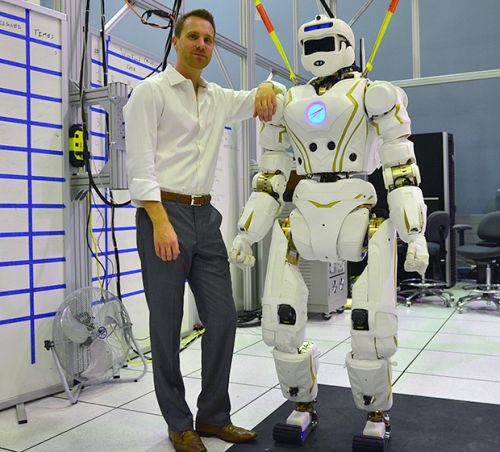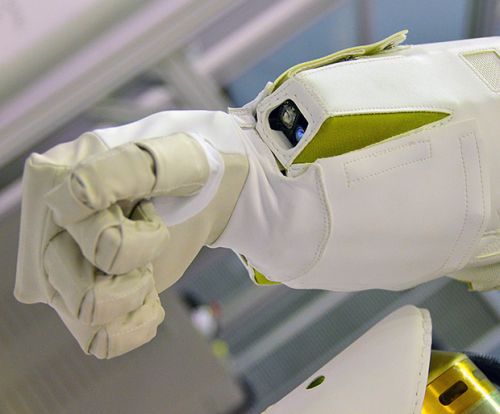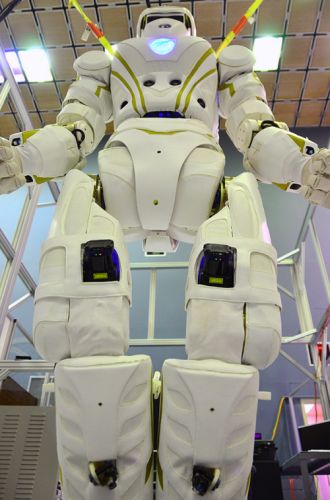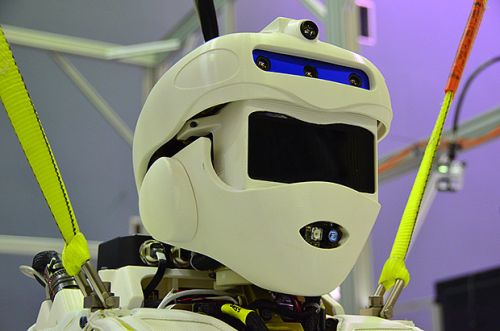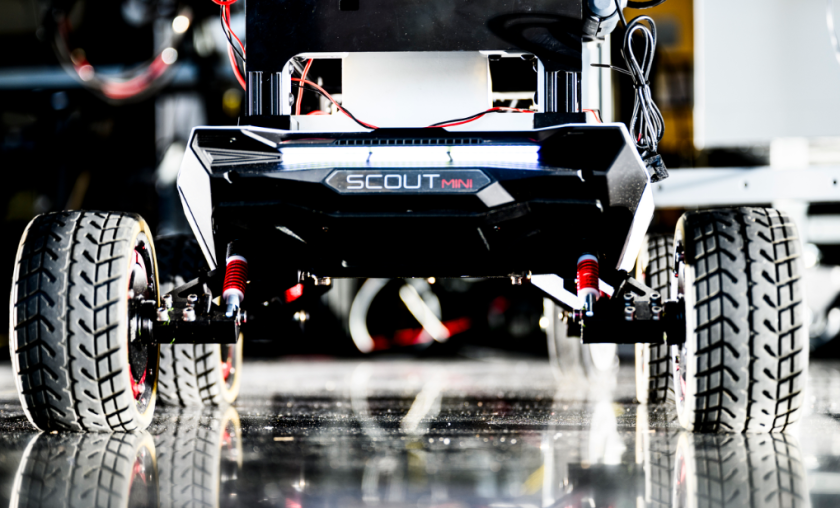NASA’s Johnson Space Center (JSC) in association with the University of Texas and Texas A&M and with funding from the state of Texas itself have built a humanoid to which they call, Valkyrie, officially designated as “R5”. The bot is 6.2 feet tall, weighs around 125 kgs with 44 degree of freedom and is powered by battery.
The machine is not built for any space mission or otherwise but for the DARPA Robotics Challenge (DRC), that’ll hold its first round of competition in the second half of this month.This year’s DARPA challenges involve simulating the human behavior in terms of body language like walking comfortably on rough terrain, ascending ladder, using tools employing hands and driving. The robots at DARPA are expected to work just like humans under the charge of humans who have no formal training with the machines. (Okey!)
Aim is to take over from humans completely, without any special arrangement being offered to them hence, developing a humanoid form of machine became imperative to bring about the result from a bot.
Talking about Valkyrie, it is quite successful in terms of dexterity. It has seven degree of freedom arms with actuated wrists and hands, each with three fingers and a thumb, because of which it can easily manipulate its fingers for holding and grasping objects as humans do.
It has an ability of tilting and rotating its head, it has a rotatable waist and six degree of freedom legs inclusive with feet equipped with six-axis force-torque sensors. The machine is powered on battery that gives nearly an hour of activity.
Its limbs are detachable, in couple of minutes a damaged arm can be replaced with a new one. One of the best part about the limbs is, left arm can be substituted with right one or vice-versa this is because of the identical construction that went behind the making of the appendages. (Wow!)
Ease with which the bot can be fixed will going to be its significant advantage over the other robots during the DRC.
As expected, Valkyrie is saturated with an overwhelming amount of sensors across its body, like cameras are fitted in its head, abdomen, forearms, knees, and feet. This is not enough, its head is also equipped with LIDAR ( a remote sensing technology that measures distance by illuminating a target with a laser and analyzing the reflected light) and abdomen is sodden with sonar. (Anything’s left!?!)
The machine is capable of identifying the synergies between the transmitting of data and sensor that is relevant to the bot’s current task that’ll help it in maintaining the balance in giving the best possible efficient results. This will also help the robot in being more autonomous and less dependent on humans, which is a major requirement for all DRC robots.
Disaster scenarios are different on earth with respect to space and because of this factor the templates for the robots has to be different respectively. When we talked about the space robot, Robonaut 2, we saw that it had no legs, rather only torso and arms. There is no question of walking in space, so a bot without legs would do, in fact it would be an easier job then to fix it to a crane and dock on the ISS. But on earth, gravity rules, so robo template has to set accordingly.
If we talk about aesthetics, Valkyrie will definitely score well on that. Unlike ATLAS, which is protected by cages of steel tubing, Val has a custom designed clothing which makes it a fabric-wrapped robo, which one can feel connected in case you prefer bots like iRobot or Real Steel then things would be different 🙂
By the end of this month, Valkyrie or Val (in short) will be competing against ATLAS, THOR, CHIMP , Hubo, Raytheon, HRP-2, RoboSimian and others. Val has already started creating its fan base because of the awesome combination of its designing and engineering, but the main, that is the super hero part is yet to be showcased, which’ll gonna happened by the end of this month. Which makes this year’s New Year eve all the more rockin’ 😀

